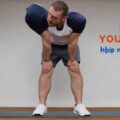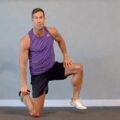What is the MELT Method?
The MELT Method is a gentle self-treatment technique designed to relieve chronic pain and improve overall wellbeing. Developed by manual therapist Sue Hitzmann, MELT focuses on hydrating connective tissue and rebalancing the nervous system. For those struggling with hip pain or limited mobility, the MELT Method offers a compassionate approach to finding relief and restoring function.
At its core, MELT is about listening to your body and treating it with kindness. Rather than pushing through pain or forcing difficult stretches, MELT encourages tuning into subtle sensations and making small, purposeful movements. This mindful practice not only addresses physical discomfort but also promotes a sense of calm and body awareness.
How MELT Can Help Relieve Hip Pain
Hip pain can significantly impact quality of life, making everyday movements difficult and limiting activities we enjoy. The MELT Method offers several ways to address hip discomfort:
- Rehydrating connective tissue: Using soft foam rollers and small balls, MELT techniques help restore fluid movement in the fascia surrounding the hips.
- Improving joint stability: Gentle compression and release movements enhance the supportive structures around the hip joint.
- Rebalancing muscle tension: MELT helps release chronic tension patterns that may be contributing to hip pain.
- Calming the nervous system: By reducing overall stress in the body, MELT can decrease pain sensitivity and promote healing.
The beauty of MELT is that it’s accessible to people of all fitness levels and ages. Whether you’re dealing with arthritis, recovering from an injury, or simply want to improve your hip mobility, MELT offers a nurturing path forward.
Key MELT Techniques for Hip Health
While a full MELT practice involves a variety of tools and techniques, here are some key elements that can be particularly beneficial for hip health:
- Soft Ball Foot Treatment: This technique may seem unrelated to hip pain, but it helps create a stable foundation and can have a positive impact all the way up the kinetic chain.
- Pelvic Floor Release: Using a soft ball, this gentle technique helps release tension in the muscles supporting the pelvis and hips.
- Hip Shear: A soothing movement that uses a soft roller to improve mobility in the hip joint.
- Thigh Spiral: This technique addresses the fascia and muscles of the upper leg, which play a crucial role in hip function.
Remember, the goal of MELT is not to “fix” your body, but to create an environment where your body can heal itself. Approach these techniques with patience and self-compassion.
Incorporating MELT into Your Wellness Routine
One of the great advantages of the MELT Method is its flexibility. You can incorporate MELT techniques into your daily life in ways that work for you:
- Start your day with a brief 10-minute MELT session to ease morning stiffness
- Use MELT as a warm-up before exercise or yoga practice
- Incorporate MELT into your wind-down routine in the evening to promote relaxation
- Keep a MELT soft ball at your desk for quick stress-relief breaks
The key is consistency rather than intensity. Even a few minutes of MELT each day can lead to significant improvements in how your body feels and functions.
The Mind-Body Connection in MELT
While MELT is a physical practice, it also has profound effects on mental and emotional wellbeing. As you become more attuned to your body through MELT, you may notice:
- Reduced stress and anxiety
- Improved body awareness and posture
- A greater sense of overall balance and calm
- Increased confidence in your body’s abilities
This mind-body connection is particularly valuable when dealing with chronic pain. MELT can help break the cycle of pain and tension, allowing for a more positive relationship with your body.
Frequently Asked Questions about MELT and Hip Pain
1. Is MELT suitable for everyone with hip pain?
MELT is generally safe for most people, but it’s always wise to consult with your healthcare provider before starting any new wellness practice, especially if you have a specific medical condition or recent injury.
2. How often should I practice MELT for hip pain relief?
For best results, aim to incorporate some MELT techniques into your routine 3-4 times per week. Even 10 minutes a day can make a difference. Listen to your body and adjust the frequency as needed.
3. Do I need special equipment to practice MELT?
While MELT-specific soft rollers and balls are available, you can start with a soft foam roller and a small, pliable ball. As you progress, you may find investing in MELT equipment enhances your practice.
4. How long before I see results from MELT?
Many people report feeling some relief after their first MELT session. However, for lasting changes, consistency is key. Give yourself at least 3-4 weeks of regular practice to notice significant improvements.
5. Can MELT replace my other treatments for hip pain?
MELT can be a valuable complement to other treatments, but it’s not intended to replace medical care. Always work with your healthcare team to develop a comprehensive plan for managing your hip pain.
Embracing a Holistic Approach to Hip Health
While the MELT Method can be a powerful tool for relieving hip pain and improving mobility, it’s most effective as part of a holistic approach to wellness. Consider combining MELT with:
- A balanced, anti-inflammatory diet
- Regular, gentle exercise like walking or swimming
- Stress-reduction practices such as meditation or deep breathing
- Adequate sleep and hydration
Remember, your journey to better hip health is unique to you. Be patient with yourself, celebrate small improvements, and don’t hesitate to seek support when needed. The MELT Method offers a compassionate way to reconnect with your body and nurture your overall wellbeing. By incorporating these gentle, mindful practices into your routine, you’re taking an important step towards not just relieving hip pain, but enhancing your quality of life.









